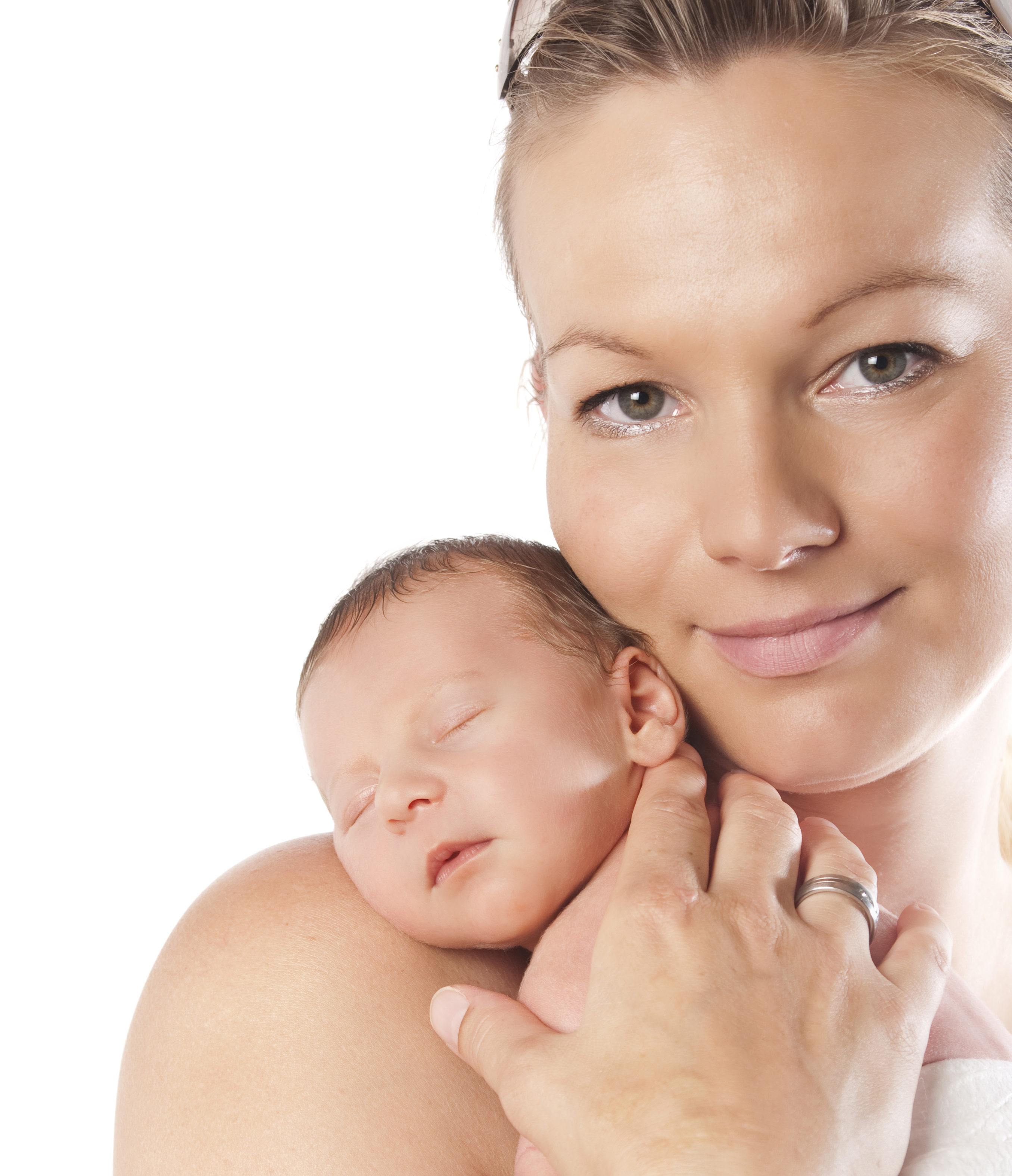After Birth - Quick Safety Check
Is your Placenta safe to consume?
Make sure you can answer 'Yes' to the following questions.
If you answer 'No' to any of the following, IPEN recommends you DO NOT consume your placenta after birth as it may be unsafe or unfit for consumption.
Was your placenta birthed onto a clean surface?
Was your placenta stored in a clean container or bag after birth?
Did you chill your placenta on ice or in a fridge within 30 minutes after birth?
Has your placenta remained chilled since your birth?
Has it been less than 3 days since you gave birth?

Frequently Asked Questions
Can I have my placenta capsules made in my home by a Placenta Specialist?
Yes, if your Specialist offers this service. Most Specialists offer to prepare remedies in your own home or their own dedicated workspace, but some only offer one service or the other. Check with your local Specialist to confirm. If they are unable to offer the services you require, ask them to help you find a Specialist who can.
If I have a medicated birth or caesarean section can I still use my placenta for encapsulation and/or other placenta remedies?
Yes, you can still use your placenta if you have a caesarean birth as long as your placenta has not been sent to pathology. We recommend you to have a clean leak proof 1.5-2L container ready to store your placenta after birth. If you are on any other type of medication during your pregnancy we ask you to seek advice from your consultant before deciding on placenta encapsulation. Please request details of services from your local placenta specialist so you have all the information you need to provide to your consultant.
What if I am Strep-B positive or have a uterine or placental infection and need antibiotics, will I still be able to use my placenta?
Strep-B, GBS infection requires you request steamed capsules only. We recommend your placenta is steamed before encapsulation to ensure the strep-b bacteria is killed at a high heat before dehydrating your placenta.
If you have tested positive or are suspected of having a uterine or placental infection, we advise you do not consume your placenta.
What if I give birth prematurely?
Premature births are often associated with problems in pregnancy. As long as your placenta is examined and cleared from any type of abnormality and stored safely after birth, your placenta is likely suitable for consumption.
I want to donate my baby’s cord blood. Will I still be able to have my placenta made into capsules?
Yes, you can do both. We advise parents to bring two separate containers with them to hospital and ensure their midwife or doctor knows you are planning on both consuming your placenta and banking cord blood. The placenta should be put into the placenta container after birth and stored safely in the cooler bag. The umbilical cord should be stored in a separate container awaiting collection from the company of choice. We do however believe parents should make an informed choice about cord blood banking so please read this article from Midwife Thinking Blog before your make any decisions.
Are there any circumstances when it would not be possible to use the placenta for encapsulation or other placenta remedies?
Yes. If your placenta has been sent to pathology in hospital for any reason we do not recommend you consume your placenta because it may have been contaminated while in the pathology lab of the hospital. You can request the hospital to take a small sample or swab of your placenta for examination in this instance and you can freeze your placenta to await test results before continuing with placenta remedies.
We also do not recommend using your placenta for encapsulation if your placenta has not been stored properly after birth. See storage guidelines below.
How do I store my placenta safely after birth?
Visit our Placenta Care page for a complete list of items you need and exactly how to store your placenta after birth. Your placenta should be put into a clean, leak proof container immediately after cord cutting and inspection by a midwife/doctor. Then transferred straight to your fridge at home or stored in a cooler box/bag with plenty of ice, kept at or below 8°C (46.4°F) for no longer than 12 hours. You should arrange for your placenta to be put into a refrigerator stored at below 4°C (39.2°F) as soon as possible and within 12 hours after birth.
When is the best time for the cord to be cut if using my placenta for placenta encapsulation?
We highly recommend all mothers to choose delayed cord clamping for the benefit of their newborn. Delayed cord clamping involves leaving the umbilical cord intact for at least 3-10 minutes after birth, longer if possible. During this time the cord is still pumping up to 150ml of iron and stem cell rich blood to your baby which has been scientifically proven to have lifelong benefits for your baby. Delayed cord clamping does not affect placenta encapsulation in any way.
I’ve heard the placenta is full of waste and may contain toxins, is this true?
A study published in 2018 showed levels of arsenic, cadmium, iron, lead, selenium and mercury found in placenta samples to be below EU toxicity thresholds for foodstuffs. Your placenta acts as a life supply for your baby during pregnancy and if it were full of toxins this would make a very dangerous organ for your baby to be fed from, therefore it is not possible for the placenta to be ‘full of waste’. The placenta acts as a gateway for nutrient supply to your baby and waste from your baby is passed back to your body to be filtered through your organs.
How long can I store my placenta in the fridge or freezer for before using it?
We always advise mothers to make use of their placenta sooner rather than later. However, if circumstances arise where this preparation cannot take place immediately, placentas are only safely stored in the fridge for up to 3 days and must then be transferred to the home freezer. The placenta should be thawed thoroughly in the fridge for 24-36 hours before encapsulating or making any other remedy. Frozen placentas should be processed into remedies within 6 months.
As soon as I have given birth can I keep my placenta and decide to have it encapsulated later?
Yes, however nature has intended for your placenta to be consumed as soon as possible after birth so we believe 'the sooner the better’. We advise you read the storage guidelines above. Keep your placenta below 8°C after birth using ice packs and cooler bag for no longer than 12 hours and transfer the placenta to a safe refrigerator as soon as possible. Contact your local placenta remedy Specialist for more information. You can also store your placenta in the freezer for up to 6 months.
How is the placenta prepared for steamed (TCM) placenta pills?
- The placenta is washed, steamed, sliced and prepared for dehydration.
- The placenta is dehydrated using a food dehydrator or oven for 8-12 hours until completely dry.
- The dried placenta is ground into a powder and put into empty vegetable capsules.
How is the placenta prepared for raw (simple) dehydrated placenta pills?
- The placenta is washed, sliced and prepared for dehydration.
- The placenta is dehydrated using a food dehydrator or oven for 12-16 hours until completely dry.
- The dried placenta is ground into a powder and put into empty vegetable capsules.
What is the difference between raw dried and steamed placenta capsules?
The raw dried method is the dehydration of raw sliced placenta at high heat for a short period to kill surface bacteria, then at medium heat for the duration of the drying time. The steamed process involved cooking the placenta in a steamer pot for up to 30 minutes until thoroughly cooked through, then slicing and dehydrating at medium heat.
The choice between raw and steamed preparations is one of personal preference. Mothers do not report significant differences between the two. The raw dried method will likely yield more capsules.
Which is better, consuming the placenta raw or encapsulating?
Both! We recommend mothers to consume some of their raw placenta after birth in a smoothie to support the body in immediate repair and then consuming the rest of their placenta in capsules. The many potent stem cells and growth factors found in the raw placenta may be the reason so many of our clients report almost immediate reduced blood loss, increased breastmilk production and increased energy within minutes after enjoying a raw placenta smoothie. A raw placenta smoothie only requires a small amount of raw placenta (about 3tbsp) and the rest of the placenta can easily be made into raw dried or steamed capsules for ongoing benefits from the placenta.
Aren’t the hormones contained in the placenta actually destroyed during the cooking process used when preparing TCM capsules?
According to a recent study the hormones in the placenta are more than 90% reduced during the steamed method of preparation. During the raw dried method there is a 60-90% loss of hormone content through the processing of placenta into capsules. Iron is not damaged by heat however there may be minimal damage to other nutrients found in the placenta during processing into capsules. The best way to provide your body with a boost of your own naturally occurring hormones is to consume your placenta raw, immediately after birth in smoothies or similar.
Placenta capsules give a new mother the chance to benefit from her placenta for months after birth and have shown to have incredible benefits to energy levels and breast milk supply. There is currently no scientific evidence to suggest the placenta capsules are not beneficial or cause harm to the mother or her baby.
If I have a raw placenta smoothie, will I taste the placenta?
No. Raw placenta smoothies taste of nothing but fruit and berries. A simple recipe of placenta, red berries, banana and water is a favourite amoung UK mums and ensures mothers enjoy their smoothies after birth tasting nothing more than than fresh fruit.
What other ingredients are in the placenta capsules and are they suitable for me as I’m a vegetarian?
Placenta capsules contain 100% placenta – nothing else. IPEN certified Specialists use vegetable cellulose capsules only; so they are safe for vegetarians and vegans. When preparing steamed capsules, the placenta is steamed with lemon (for grounding), ginger (for circulation) and chilli (for heat) which are added to the water below when steaming but no included in the final placenta powder.
How can taking placenta capsules boost my milk supply or help keep the ‘baby blues’ at bay?
In our experience placenta capsules have supported many women through many months of successful breastfeeding, mainly due to the high levels of prolactin found in the placenta which is responsible for breastmilk production. In some cases some mothers have still struggled with their breast milk supply, however there were other problems involved. Many women have noticed their milk ‘comes in’ much quicker than expected and remains consistent without problems for many weeks, months or even years post-birth. We cannot guarantee any effects from placenta capsules on breastfeeding because every woman is different and may respond to her placenta remedies differently.
The baby blues often hits mothers between days 3-5 after birth and is caused by a dramatic reduction in the release of pregnancy hormones after the loss of the placenta, which provided the body with a large supply of hormones throughout the pregnancy. The placenta is rich in iron and the body’s natural stress-relieving hormone CRH, so we recommend you consume your placenta as soon as possible to prevent the hormone imbalance that causes ‘baby blues’ which may develop into post-natal depression.
Do the capsules smell or taste of anything?
Most capsules do not smell or taste of anything. Some mothers describe placenta capsules to have an ‘earthy’ smell. Some placenta capsules may have a slight taste of meat however if swallowed quickly you will not notice any taste or smell. It is said if you freeze your capsules and take them straight from the freezer, any unpleasant smell or taste will disappear. If you find your capsules begin to smell or taste unusually bad we recommend you stop taking your capsules and contact your placenta Specialist who can advise you on storage guidelines and how to proceed.
How should I store my placenta capsules?
Placenta capsules should be stored in the jar provided in a cool, dark place for up to a year. Do not store your capsules in the fridge as condensation could cause them to deteriorate.
We highly advise you to wash your hands before and after handling your placenta capsules.
How big are the capsules and how long will they last?
We recommend size ‘0’ capsules when preparing placenta pills which are a standard medium sized capsule. They measure roughly 2cm in length and 0.7cm in width.
How many capsules will my placenta make?
Placentas make between 90-300 capsules depending on the type of method you choose and the size of your placenta. A full-term placenta will yield an average of 140 capsules for the raw dried method and 120 capsules for the steamed (TCM) method.
How long should I take my placenta capsules for?
You can take your placenta capsules for as long as you feel you need them.
Can my family members take my placenta capsules too?
We do not recommend anyone consumes placenta capsules other than the mother who made the placenta.
What food safe methods are used to produce safe remedies from the placenta?
As part of the IPEN training process, all students are required to fully certify in Infection Control, Food Safety Leve 2 and HACCP Level 2. All equipment is either single use or cleaned thoroughly and disinfected between clients using hospital grade disinfectants. All disinfectants used are proven effective against bloodborne pathogens including Hep B, Hep C and HIV. The IPEN Method of placenta processing was created by IPEN in 2008, improved and updated in 2014 with the support of a professional food safety expert team and is validated by two food safety microbiologists.
Will I experience any side effects when taking my placenta capsules?
We cannot guarantee results with placenta capsules or any other placenta remedy. Because your placenta is made by you the quality and potency of your placenta smoothie and capsules is unique to your own placenta. We highly recommend you follow the care instructions given by your placenta specialist. Storing your placenta capsules properly, avoiding steamed capsules when ill and not taking over the recommended dose will reduce your chances of experiencing any side effects. Very rarely, less than 2% of clients have reported some side effects when taking their placenta capsules from feedback collected from 900+ mothers between 2013-2015. We have listed these below for your benefit.
- Mild headaches (reported 3 times – we believe a lower dose is recommended to solve this problem)
- Stomach cramping or abdominal pain (reported once – possibly the result of bacteria growth due to improper storage of capsules)
- Stomach cramping for those also taking iron supplements (we recommend not taking iron supplements and placenta capsules at the same time)
- PUPPPsrash returning after 3 days of consuming capsules (reported twice)
- Pelvic girdle pain (PGP) sufferers feel less relief (we believe this is due to the high level of relaxin hormone in the placenta, which is the cause of PGP)
- Unexplained lack of milk production (reported from 4 women over the last 5 years)
- Emotional symptoms, stress, anxiety, depression (reported 5 times)
With regards to a placenta therapy such as a tincture, will I be able to make more when I have used up all of my supply?
Placenta tincture and essence are made up in 200ml bottles or more and are provided with an easy access dropper bottle. Speak with your Specialists for details. Our advice is to use your remedies when you feel you need them the most.
If I run out of my placenta capsules, what do I do?
Unfortunately we cannot offer any advice to support mothers who run out of their placenta capsules. The safest way to have more placenta capsules is to grow another baby and placenta. There are online sources that offer sheep’s placenta capsules however we highly recommend you research these companies before committing to any type of animal placenta treatment.
Can I do the placenta encapsulation or make the other placenta remedies myself?
Yes. Most mothers choose to hire a professional placenta Specialist to make their placenta remedies to free up more precious time to bond with their baby after birth and not worry about spending time and energy in the kitchen preparing placenta. If you do decided to make your own placenta remedies make sure you do plenty of research.
I’m not so sure my placenta capsules are working, how do I know?
Many of our clients say they simply feel ‘good’ while taking their capsules but are unsure if that’s just the way it would have been had they not consumed their placenta. Try skipping a day or dose and see if you feel any different, then you’ll know if there really is a change or not.
I have some capsules left over and I’m pregnant again, can I take my left-over capsules while pregnant?
The placenta is designed to help the body recover after childbirth and composes of hormones which may contract the uterus. To prevent any risk of miscarriage or pre-term labour, we highly advise mothers not to take placenta capsules while pregnant.
© Independent Placenta Encapsulation Network



